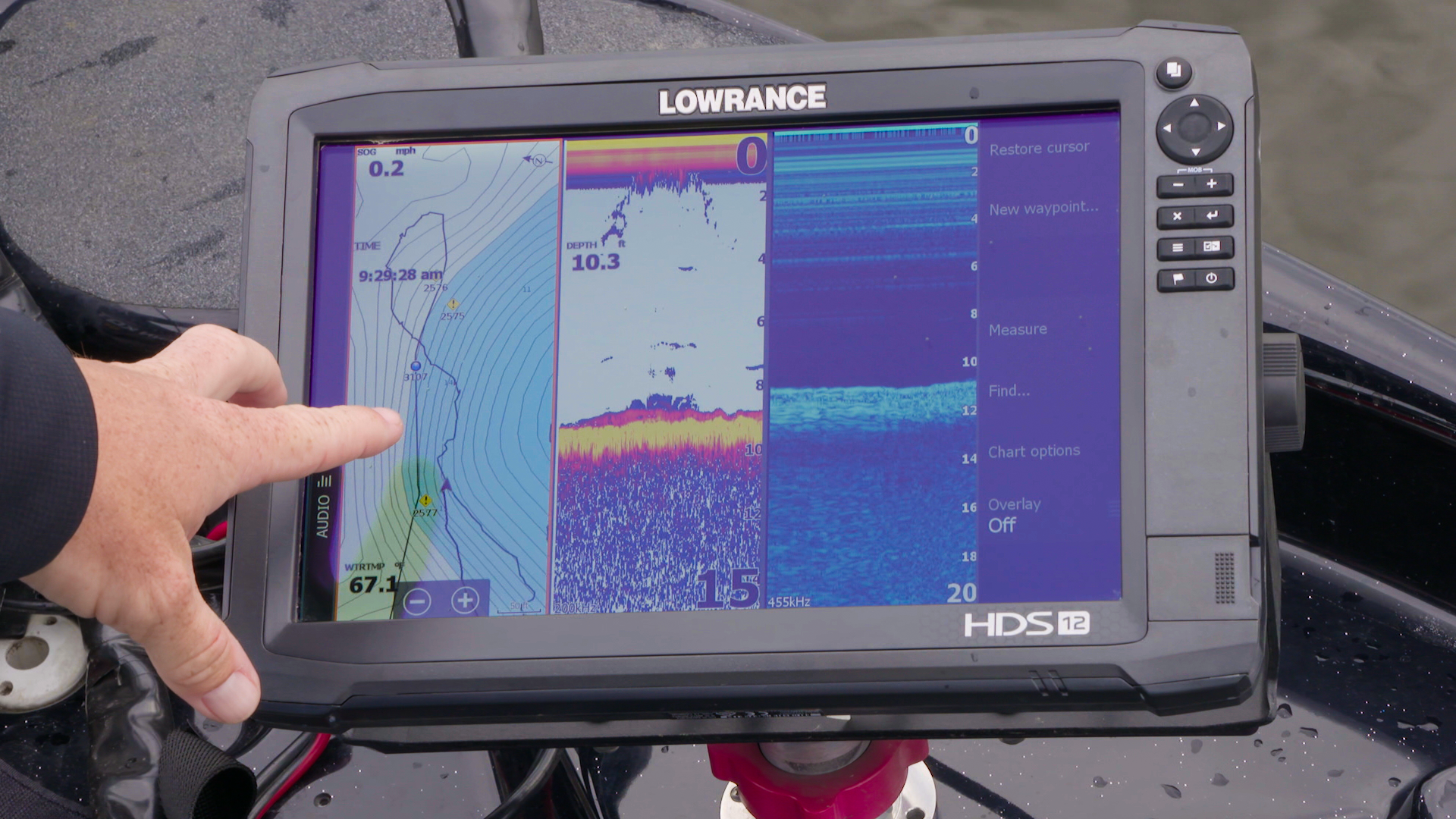Waypoint sharing is the most common function of networked graphs, but as bass pro Jeff Sprague points out, there are additional and powerful network share functions that benefit bass anglers.
Take for example sonar; Sprague networks his console and bow graphs for waypoint sharing but also shares sonar info from the back of the boat to the bow. He runs a tri-screen bow configuration that displays mapping, 2D sonar and DownScan Imaging but the DownScan Imaging readout is sourced from his transom transducer. This allows for seeing what’s directly below you on the bow (with dedicated 2D sonar) while also seeing what lies in the back of the boat approximately 20 feet away.
What’s the value of this? You can better orient your boat on a spot in relation to contours — the depth change from bow to back provides a better sense of exact boat positioning relative to the structure. It’s also useful to know if there’s fish in the front or rear of the boat. Twenty feet can be significant; you may have fish at the back of the boat and nothing below you at the bow. Having a common operating picture of the front and rear of the boat from the bow helps you stay on the fish and key structural elements.
Check out our comprehensive Electronics Tips section for info on getting the most from your fish finders.












